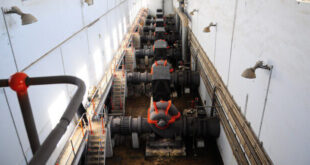Damascus, SANA – The Federation of the Syrian Chambers of Commerce said the trade sector in the country has already started to recover despite the hard-hitting economic sanctions whose impact lingers since 2011.
The Syrian economic sector has been a key target for the foreign parties leading the war on Syria-now in its fifth year-to debilitate the Syrian state and undermine its geostrategic role in the Middle East region in favor of passing the Zionist western
projects.
Internal and external trade has been hard hit by the economic blockade, and so was the foreign currency transfer sector. The Syrian exports have been heavily affected having lost many traditional markets.
However, a report by the Federation of the Syrian Chambers of Commerce struck a confident note as it showed that the year 2014 marked, economically speaking, the beginning of “leaving the bottleneck of the crisis”.
Some features of this early recovery are manifest in having many industrial zones and cities resuming production and the export rates growing in the past period. There was also a “relative stability” of the currency exchange rate, which until recently has showed the price of the Syrian pound-referred to as SYP- comparatively improving against the US dollar after a previous sharp decline.
The report provided figures indicating some of the losses caused to various economic sectors in Syria.
The Syrian industries suffered losses of no less that USD 2.2 billion, while the electricity sector’s losses were estimated at USD 400 million.
The agricultural sector’s contribution to the Gross Domestic Product (GDP) dropped by 20 % in 2010, with this percentage however getting improved in 2014 to reach 5 %.
Tourism contribution to the GDP has improved from 14 % in 2010 up to 2 % in 2013.
Due to the many difficulties facing the manufacturing process and that of securing the necessary raw material, the rate of exports of manufactured and half-manufactured commodities has declined in favor of the raw material exports in the 2010-2013 period.
Raw material exports increased in 2013 by 16.4 % over the previous year, while the manufactured commodity exports decreased by 16 %.
Initial estimates, according to the report, indicate a noticeable improvement in exporting manufactured commodities in 2014, particularly in the clothing and food sectors.
2014 has witnessed the return of many businessmen and investors back to work, with the number of those registering in the chambers of trade and industry increased, coming closer to the numbers of 2010.
This, the report noted, has contributed to improving the GDP, which is still at its lowest levels.
The report said there will be a full review of the policies, measures and legislations in the coming period to come to more coordination in the ongoing work to achieve higher economic growth rates.
Haifa Said
 Syrian Arab News Agency S A N A
Syrian Arab News Agency S A N A




